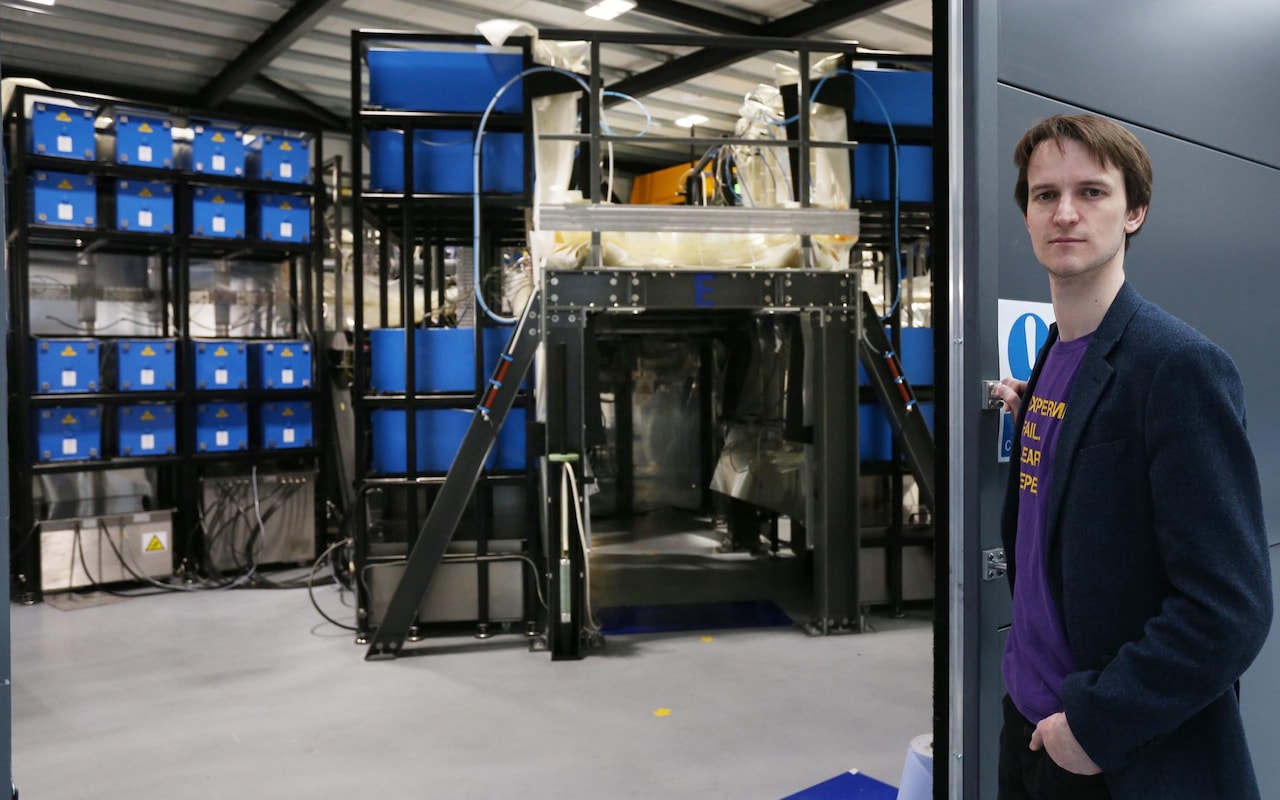First Light announces fusion from their projectile-driven approach
On 5th April 2022, First Light Fusion announced a world first fusion result, proving their projectile approach and unique new target technology.
So what have they done and why is it important?

Image: Dr Nick Hawker, co-founder and chief executive of First Light Fusion. CREDIT: John Lawrence from The Telegraph.
What have they done?
First Light Fusion, a private fusion company, has achieved fusion reactions by a new approach—by sending a shockwave through a bubble of deuterium fusion fuel in their proprietary fuel targets, initiated by a 100g projectile fired at 6.5km per second (14,500mph). The design of the targets focusses and amplifies the impact so that the fuel implodes and reaches the extreme conditions required for fusion.
The UK Atomic Energy Authority (UKAEA) has independently validated the result.
The reaction that would be used for a power plant would be fusing deuterium and tritium (both types of heavy hydrogen). In this experiment they have fused deuterium with deuterium as a preliminary step. Both these fusion reactions produce neutrons, albeit at different energies depending on the reaction, do detection of neutrons is a signature of fusion taking place.
About the amount of fusion reactions produced, the company said, “the number of neutrons produced is low, around 50, however, this matches the predicted yield exactly.” They also indicate that they have already bettered that result.
On Twitter, CEO Nick Hawker gave some technical details on how they measured the neutrons and the reason for confidence in their result. He summarised, “we are very confident that this is not false positive background.”
He also clarified: “We are not claiming to have measured thermonuclear fusion. This means fusion produced by a hot plasma in thermal equilibrium.” He says it may be thermonuclear, but more evidence is required to say for sure.
But he is unequivocal about the achievement, saying: “In the end, there is no alternative hypothesis. It has to be fusion.”
Why is this result impressive?
First Light Fusion uses a completely new approach to fusion, so this is breaking new ground. The result has been achieved faster and cheaper than traditional fusion approaches. The company says they have spent less than £45 million, and have achieved a rate of performance improvement faster than any other fusion scheme in history.
First Light’s approach is centred around the sophistication of its target design, while they aim for the engineering of the power plant to be relatively simple. The targets are very complex but the physics can be modelled accurately. The fusion result they have announced matches with their simulations.
Professor Yiannis Ventikos, Kennedy Professor, Head of Department for UCL Mechanical Engineering and co-founder of First Light said: “True to First Light’s rigorous scientific approach, this result is supported by strong and continuously evolving computer modelling. This capability sheds light, in exquisite detail, into the processes that generate these neutrons.”
The team is supported by a strong Science Advisory Board, which released the following statement:
"We congratulate the First Light team on reaching this significant milestone. We have watched first hand as they have advanced along this path to fusion. First Light’s target designs are remarkable, and the team’s ability to accurately simulate and thus optimise their performance gives them an invaluable tool on the path to gain. That journey will undoubtedly involve many hurdles, but in reaching fusion, First Light’s technology has shown its merit.”
Why is it important?
This result proves First Light Fusion’s unique new target technology, which is the key technology piece to their fusion approach.
This approach could be a simpler, cheaper way of achieving fusion if it proves successful, and this result is an important step on the way.
To achieve fusion conditions First Light compresses fusion fuel inside a specially-designed target using a shockwave generated by a high-speed projectile. This removes the need for complex and expensive lasers or magnets to generate or maintain the conditions for fusion.
Their plant design eliminates three of the major challenges of fusion: preventing neutron damage; producing tritium; and managing extreme heat flux. The reaction chamber has liquid lithium walls that absorb the fusion energy—blocking the neutrons, managing the heat flux and breeding tritium fuel. A heat exchanger transfers the heat of the lithium to water, generating steam that turns a turbine and produces electricity.
You can find out about the First Light Fusion power plant approach on their new website.
The key technology is the target design, which focuses the energy of the projectile. They aim to keep everything else as simple as possible.
The company said: “First Light believes this approach accelerates the journey towards commercial fusion power as there is a large amount of existing engineering that can be reused to realise its proposed plant design.”
Their business model is to mass manufacture the targets, partnering with power plant operators to become the fuel provider. Nick Hawker has published research that shows that projectile fusion offers a pathway to a very competitive Levelised Cost Of Energy (“LCOE”) of under $50/MWh, which could directly compete on cost with renewables.
What’s next?
First Light is working on an experiment to demonstrate energy gain (more energy out than in). They say plans for this are advancing at pace.
They are also working on a pilot plant producing ~150 MW of electricity and costing less than $1 billion for the 2030s. The company expects to also partner with existing power producers and is working with UBS Investment Bank to explore strategic options for the next phase of its scientific and commercial development.
Further details of this result can be found on their website: https://firstlightfusion.com/media/fusion
